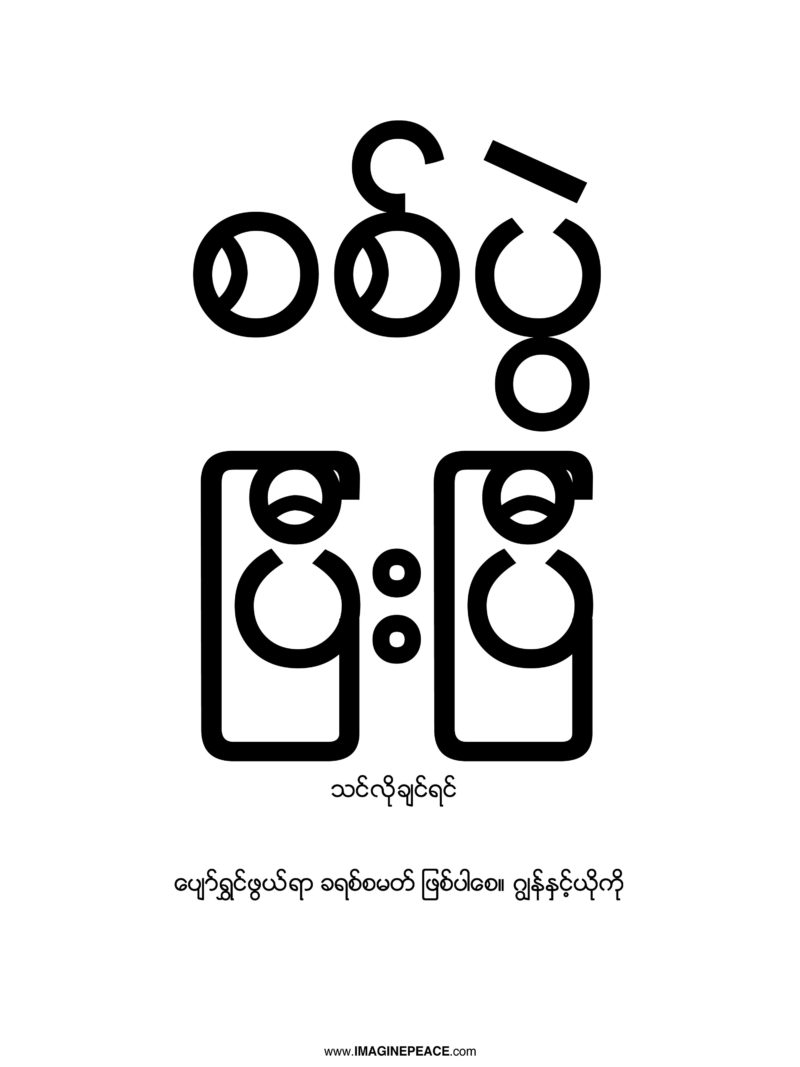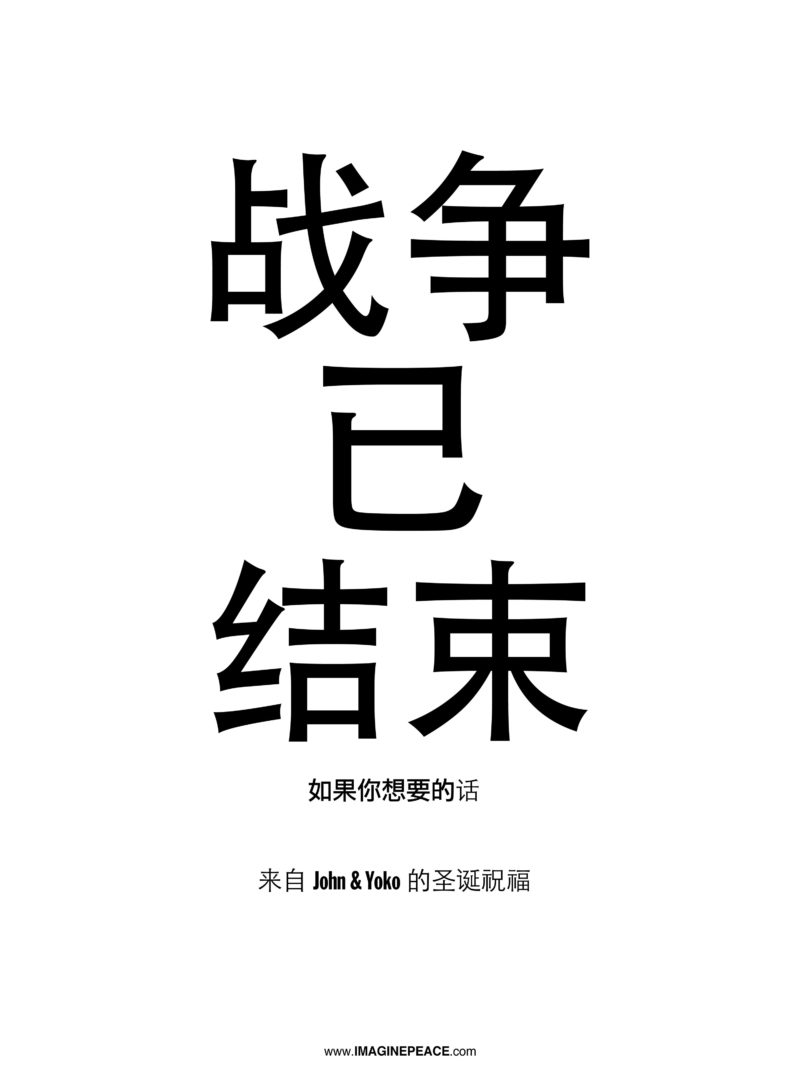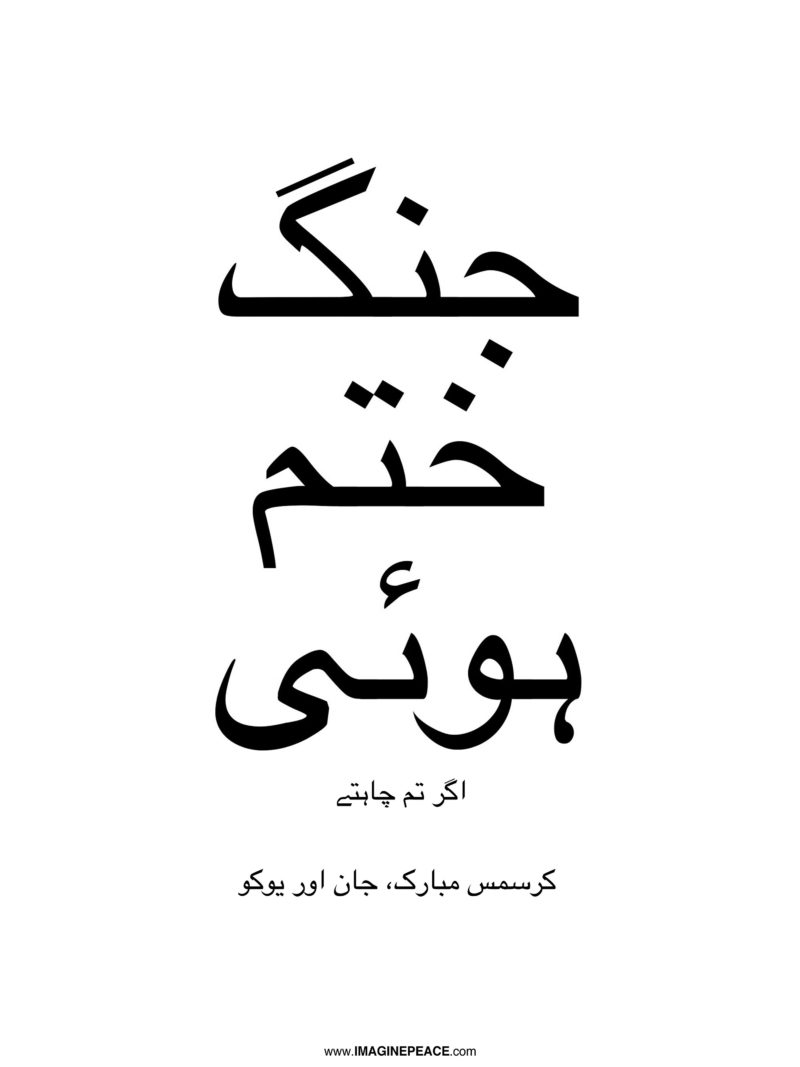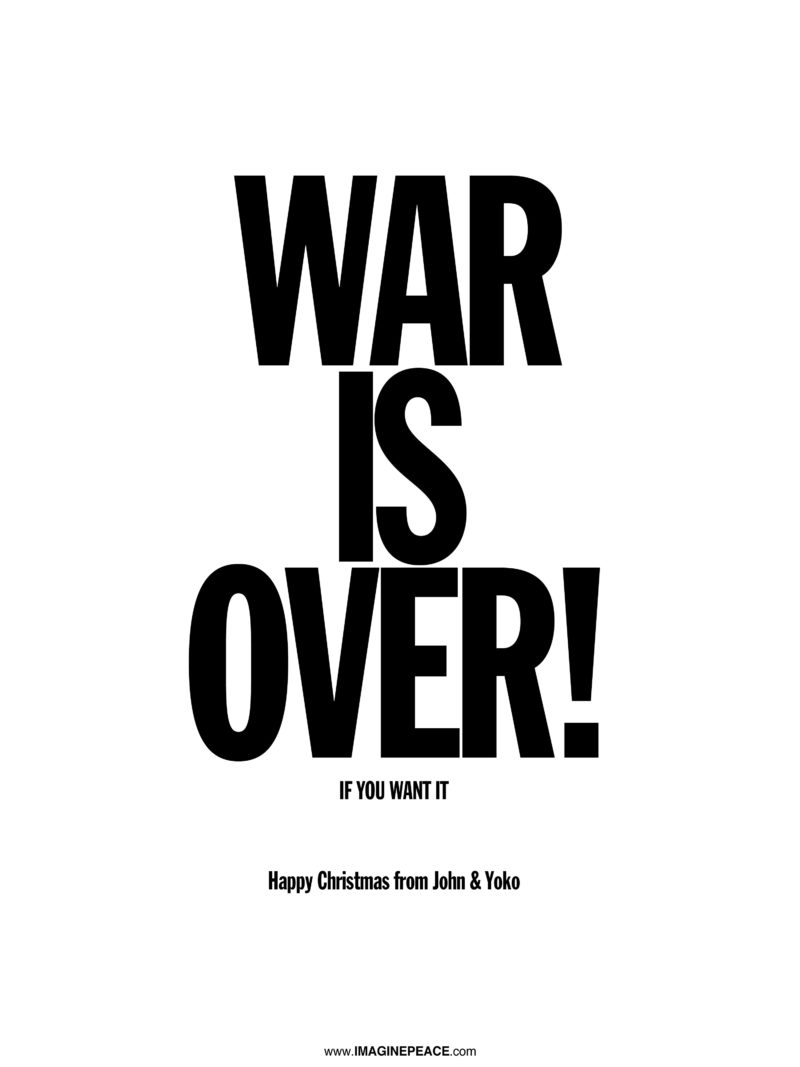
What was it?
The War Is Over peace campaign has just marked its 50th years since it was conceived. In such a well-orchestrated move, the world woke up on the morning of December 15, 1969, to a worldwide propagation of a peace message.
Deliberately intended to draw the crowds and reach as many people as possible, Yoko Ono 1 & John Lennon made use of leaflets, posters, radio announcements, newspaper advertisements and billboards to send a message of self-responsibility for peace. The message of the campaign was simple yet powerful at the same time:
WAR IS OVER! IF YOU WANT IT
At the bottom of each of these messages is a signature sign-off indicating that it originated from John & Yoko. The season sometimes alters the wordings of the signature, but it never fails to reveal where it came from.
Yoko Ono is behind the entire concept of spreading peace through a poster which the couple then scaled to international levels. Incorporating techniques such as political propaganda and advertising has played a huge role in spreading the peace agenda.
Speaking about their campaign in one of his short videos, Lennon mentions that they decided to sell their peace message through channels that huge brands and political outfits had used to their advantage.
By presenting it (peace), like something which people could touch and interact with, their sole mission was to get everybody’s attention drawn to the fact that war and peace are their choice. Lennon explains that they chose the Christmas theme deliberately so that the world could find at least one excuse to choose peace over this season.
Campaigning for peace using posters
Those who saw the posters that John Lennon and Yoko Ono had put up on the morning of December 15, 1969, must have thought that it was a passing phase – a season for this couple to express themselves in a unique form of art. The truth is that they had just begun what would be an unstoppable and infinite campaign for peace around the world.
On the very same day that the first set of posters went up for the public to see, John and his wife Yoko flew over to Toronto to carry on their campaign. By then, the message of peace was in 12 major cities of the world (Los Angeles 3, New York 4, Rome, Toronto, Amsterdam, Athens, Paris 5, Helsinki 6, Berlin 7, Tokyo 8, Hong Kong 9 and London 10).
In each of these places, the drill was the same; the message on the billboards and posters was peace. There were also radio commercials for the same message as well as newspaper advertisements.

Bed-ins
Before the launch date of the poster campaign, John and Yoko had used another captivating scenario to get their peace message out to the public domain. At their wedding, which took place on March 20, 1969, the couple organized a pair of bed-ins as a demonstration for peace. The Hilton Hotel located in Amsterdam hosted the first bed-in, which took place between March 25 and March 31.
The second bed-in took place in Canada at the Queen Elizabeth Hotel and ran from May 26 to June 2. The bed-ins came at a time when Lennon was breaking away from the Beatles. June 1, 1969, was a rather epic day for John Lennon because he recorded his first song as a solo artist after having left the Beatles.
1 h 10 min
The origin of the idea
The concept of war is scary – we all know for a fact that the greatest aftermath of war is death. What about the destruction and disruption to human life?
According to John and Yoko, the choice to go to war or live in peace is personal. People have the power to decide that they do not want to bear with the aftermath of war simply by choosing to stay away.
The idea of a peaceful worldwide anti-war campaign was triggered by unrest in Biafra, Vietnam and other regions of the world. The duo went ahead to print peace ads and leaflets from their own pockets in the hope that people would choose peace over war.
By the time the Vietnam War caught the attention of John Lennon and Yoko Ono, American fatalities were recorded as 40,000. It would be another five years after the inception of the peace campaign that the war would finally come to an end. To Yoko and the husband, it was important to get the peace message out there.
Nearly every space that would be used for advertisement was utilized for purposes of the campaign. It was a message that people could not ignore and the more they got familiar to seeing it, the deeper the message sunk.
A month before the launch in November, the couple would be joined by another Beatles member, George Harrison, for a UNICEF benefit performance in London. The event, which was graced by other big names from the rock and roll community of artists, would be the first performance by Harrison and Lennon. Even though the peace poster campaign had not been launched yet, the stage banner read “War is Over” when it was their turn to be on stage.
Settling for the poster idea
Before they settled on the poster as the most suitable medium for spreading the peace message, John and Yoko had initially gotten into an agreement with a New York City-based shop owner who agreed to print a customized headline for a newspaper.
The problem is that they would need to contact every newspaper publication in the cities they had selected. This was quite a challenge and they felt it could take ages before they could achieve it. The easier alternative would be to use posters instead.
Working with posters required identification of the locations in which the peace message would go up. The slogan would then be prepared, making sure to have it completed in the various locations simultaneously; this was enabled by the fact that they used minimal effects on the posters.
Looking at the poster for the first time, one cannot help but notice the perfect design; it seems like it has been up for years. The choice for black and white, bold font, the punctuations and the writing effect of shrinking the wordings cause the message to appear serious. Part of the reason why their artwork stood out is because of the input of John Kosh.
A photographer and art director, Kosh has been previewing the concept that John Lennon and Yoko Ono were preparing to present to the world. In May of 1969, he had been the photographer in Montreal and Amsterdam when the bed-ins campaigns were being made. Having worked on other projects such as album covers for the Beatles and equally iconic music groups, he understood what the peace message needed to look like.
Transforming lives by tuning the mind to positivity
During war, it does not matter who is winning; either side must suffer a loss of some kind. The Vietnam War continued even after John and Yoko had put up messages rallying the entire world to peace. This does not mean that the campaign did not serve its purpose; as a matter of fact, the campaign brought comfort and hope. People look up at a time of conflict in the hope that they will find a reason to hang on to the dreams of a better future.
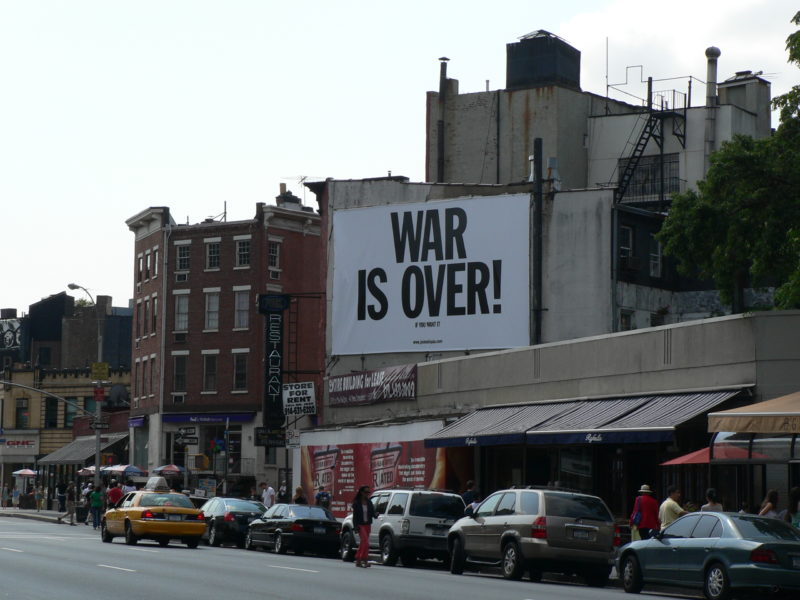
The “WAR IS OVER!” announcement created an initial impression of a statement describing the state of war at the time. To those who were against the war, this message brought temporary relief because of what it meant; their husbands, sons, fathers and brothers would be coming home. Underneath the large print are words in smaller font that read:
IF YOU WANT IT.
This part opens the mind to the reality of war; every individual has a responsibility to bring an end to war.
Wishing for hope and then realizing that we have in our hands the power to live in peace is the gift that John and Yoko have shared through their poster art. Each one of the prints on the billboards, newspapers, brochures and posters express their love and goodwill for a happy Christmas season for everyone.
The cost of the campaign
Judging from the size of the medium on which the peace message was printed, the various platforms that propagated the message and the number of locations used, the campaign must have cost a fortune.
The actual budget that went into the campaign will never be known, simply because the authors have not disclosed it. However, in answer to a question about the cost of the campaign, John Lennon said that he had not a clue, but it was definitely not as costly as human life.
The war experience that bore art
On October 9, 1940, in the midst of World War 2, John Lennon was born into the world in the dead of night. During the same period of war, Yoko, together with her brothers and sisters, was chased out of their house in Tokyo.
Unknown to them at the time, their souls had been branded with the pain and loss of war. Their paths would cross in adulthood and be the start of a lifelong relationship not only of marriage but also of bringing hope to others through art.
Speaking in 2019 about how war shaped both of them, Yoko revealed that they began working together even before they knew they would be together for life.
One of their early projects was the May 1969 bed-in in Montreal. The Canadian journalist, Glazner, who was invited for the interview, arrived early to find the Lennons drawing signs on their hotel room floor – they scribbled love and peace-themed messages to decorate the suite.
Glazner joined in and wrote ‘La Guerre est Finie’ (French translation for The War Is Over). The choice of words by Glazner would be used in their peace campaign that begun seven months later.
The poster design was not by chance. The letters follow the pattern and style of the infamous army recruitment poster that was used before World War 1.
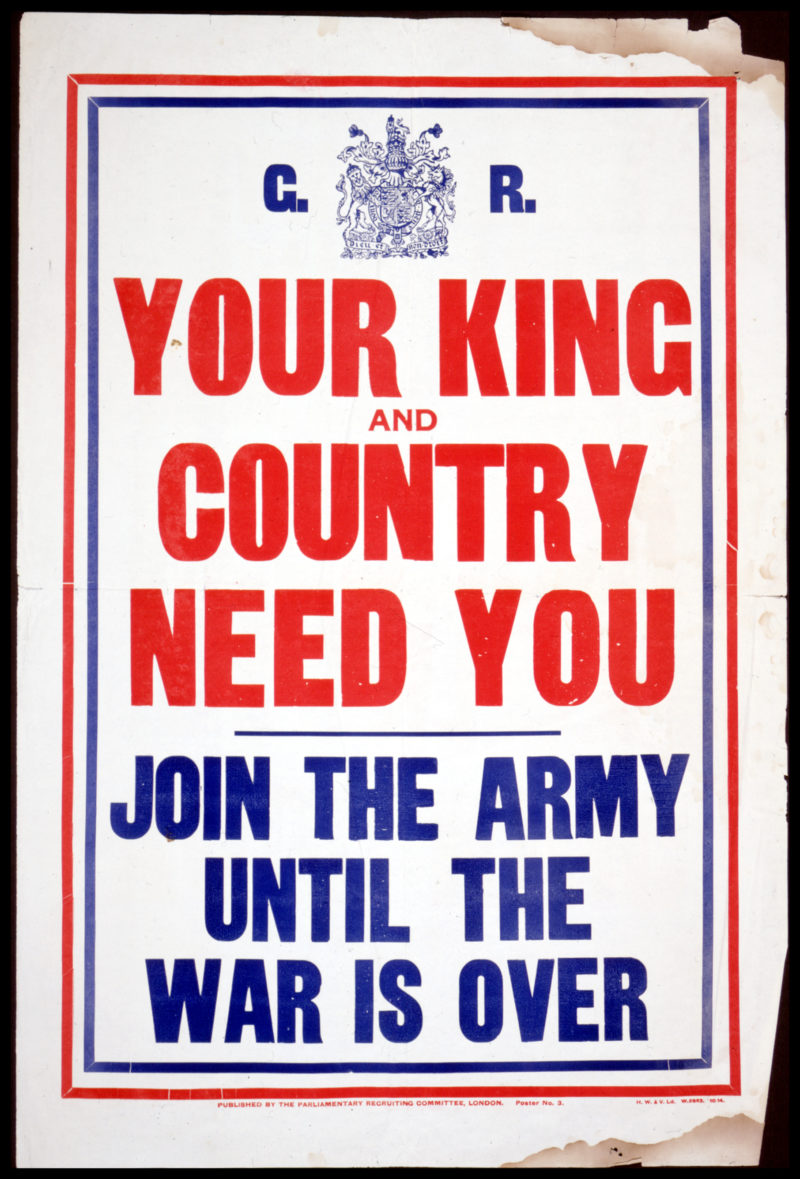
They selectively picked certain words from the original poster and reserved the format of others to get the war message across. The posters by John and Yoko employ marketing gimmicks to make their viewers want to look and look again. Although the message is simple, it still has and exercises power over free will. With so much turmoil happening in the world today, the message of peace from 50 years ago never goes out of style.
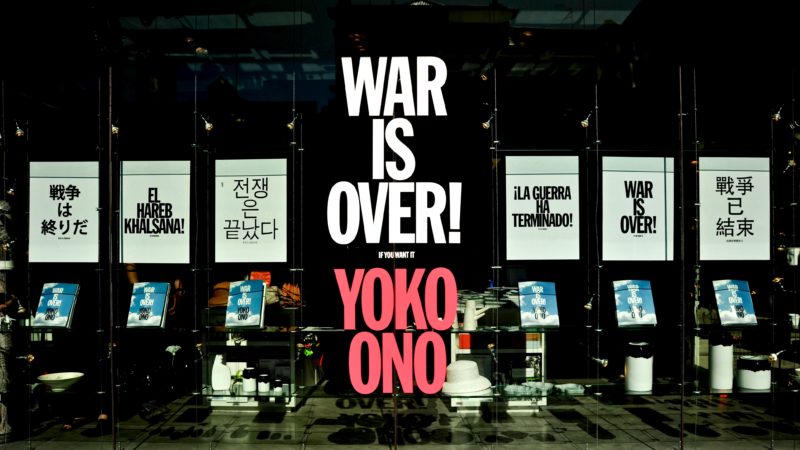
Keeping the peace alive
Just two years after the peace campaign was launched, the single by John and Yoko titled happy x-mas was released. The song’s chorus was the “WAR IS OVER!” slogan.
The X-mas song has been preserved at the John Lennon Museum because, besides entertainment, it bears a deep calling to personal peace. From the opening line that says, So this is Christmas / and what have you done, the song calls upon everyone to own up to the events taking place around them.
Every year, Yoko reignites the peace campaign by making print ads, posters and cards in multiple languages. She encourages those who come across her artwork to download the posters, print and display them or send them to family and friends as season greeting cards.
For those who have seen the movie poster for La Guerre Est Finie, have you noticed the image of the woman with her long hair and the man on her breast? If you look at the photographs taken by Annie Leibovitz of John and Yoko, the resemblance is resounding; was it a coincidence?
Conclusion
Most of the public images of the Lennons have been quite deliberate and the world seems to be pushing them in this direction. Yoko often speaks about the couple being challenged by a film director once to use their position of influence to inspire people’s choices on war.
Through the WAR IS OVER (If You Want It)” campaign, the Lennons speak directly to the people to tell them that they have the power to choose the kind of life they want. The Peace website 1819 that Yoko launched in 2015 is supposed to spread this message further and wider.
Anyone can go to the website to download the peace poster as many times as they need to. In her statement on the website, Yoko mentions how far the campaign for peace has come. She urges people to start their own campaigns for peace wherever they may be so long as they make small impacts at a time. To her, big moves scare away people and often lead to confrontations.
